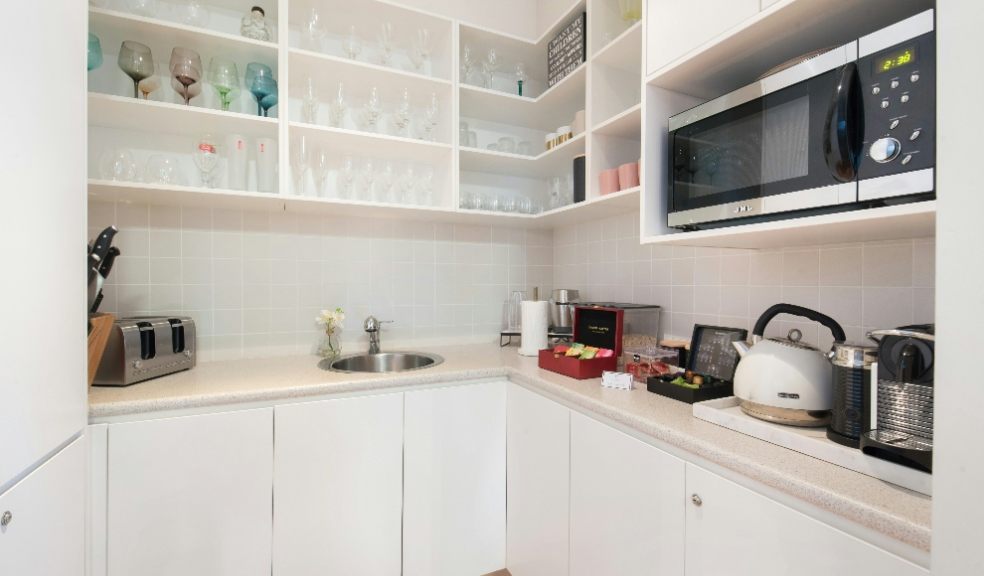
The dirtiest items in your home that you're probably forgetting to clean
Research has shown that people are exposed to an average of 60,000 types of germs (1) on a daily basis. Now, try not to think about that too much as you may never leave your home again! The important thing to note is that only a very small proportion of these germs will do you harm. That said, cleaning your home regularly can significantly help you keep your living space free from bacteria and germs that you come into contact with.
If asked where the most bacteria could be found in your home, you’d probably say the bathroom. What might surprise you is that might not actually be the case! Here, cleaning expert and Product Development Scientist at Astonish, Olivia Young, reveals the dirtiest things in your home that you’re likely forgetting to clean, as well as advice on how to and how often you should clean them.
The kitchen sponge or cloth
This might come as a bit of an unwanted surprise, but sometimes the items that we use to clean surfaces and items throughout our homes are actually the dirtiest – especially the kitchen sponge or cloth! From wiping down worktops, to cleaning dishes it’s probably used multiple times throughout the day. And when doing so, it’s usually wet and warm, meaning if it’s not cleaned properly, it can be a prime spot for bacteria to grow.
As a general rule of thumb, if you’ve used your sponge for around two weeks – it’s time to replace it. Within that time, to minimise germs gathering make sure you wring it out after every use to remove excess water and let it dry completely before putting it away.
Your shoes
Shoes are without a doubt an item in your home that is full of bacteria. In fact, a study (2) has suggested that a single shoe sole has an average of 421,000 units of bacteria – yikes! If you were to retrace your steps, you might actually be quite shocked as to what your shoes come face to face with on a daily basis. If you’re walking through a park, using a public bathroom or stepping on public transport, your shoes could be coming into contact with everything from dirt and debris to faecal matter and urine, causing bacteria to grow.
This can be a pretty unpleasant thought, but there’s no need to panic, as most of these germs that gather on shoes won’t come into contact with other areas of your house, assuming that you take them off as you enter. If you don’t leave your shoes by the front door, there are some simple things you can do to reduce the number of bacteria that stays on them – firstly, if you keep them in a box or in your wardrobe, make sure they are completely dry before putting them away as a warm, wet environment is a breeding ground for germs! Secondly, try to give them a quick wipe after use, a wet wipe will do the job, but a cloth and a disinfectant is the best option to kill 99.9% of bacteria and enveloped viruses. Finally, if you tend to wear them around the house – you might want to rethink that and get yourself some house only shoes (or stick to slippers!).
Pet bowls and toys
None of us want to think badly of our furry friends who bring us so much joy. But pet bowls have actually been found to be the third most contaminated item in households (3), meaning they are a breeding ground for germs and bacteria that could make you and your pet unwell. This means if you’re not cleaning your pet bowls and toys often enough, you could be in the dog house! To put this into perspective, it’s highly unlikely that you would use a plate yourself and then not wash it. This approach should be the same for pets.
For your pet’s bowls, give them a wash with warm soapy water after each use to keep bacteria at bay. For toys, if they’re plastic you can soak them in warm water with either disinfectant or soap, soft toys can be cleaned thoroughly in a washing machine on a gentle cycle. Just ensure they are fully dry before you re-introduce to pets. It’s also a good idea to give your hands a wash with an Antibacterial Handwash if you’ve been playing with your pet, especially if you are about to eat.
Toothbrush holder
There are probably many items in your bathroom that you would suspect would be amongst the dirtiest items in your home, such as the toilet or taps. Your toothbrush holder is probably not something you’ve considered – but you absolutely should! What’s possibly a scary thought is that there’s likely to be more germs in the container that holds your toothbrush, than the taps on your sink. The reason for this is that they pick up all kinds of bacteria from the toothbrush being in our mouths – which over time, cements its position on the toothbrush holder.
To keep germs and bacteria at bay, you should consider cleaning your toothbrush holder at least once or twice a week. Depending on the material and condition of the holder, an antibacterial spray and wipe might do the trick. If a bit more TLC is needed – then a Natural Power Cleaning Paste might be required. Make sure you take care if you opt for a paste and always test on an inconspicuous area.
Household appliances
We’re talking the kettle, toaster, fridge, oven – any appliance throughout your home that you are likely to use on a regular, if not daily, basis. You might look at these things and think, how could they possibly be some of the dirtiest? But when you think about how often you touch them, and how many people do so, in comparison to how often you thoroughly clean them, it might start to make sense.
Now, we’re not suggesting you should be deep cleaning every appliance in your house on a daily basis, but it would definitely be wise to consider including them in your cleaning schedule more regularly. This doesn’t need to be anything intensive, a quick spray and wipe with an Antibacterial Surface Cleanser will do the trick. Just make sure it is an antibacterial spray that kills 99.9% of bacteria to keep your appliances hygienic.













